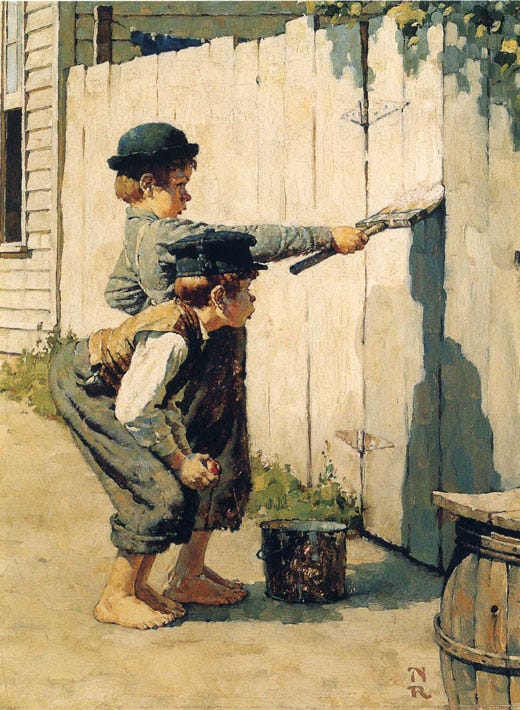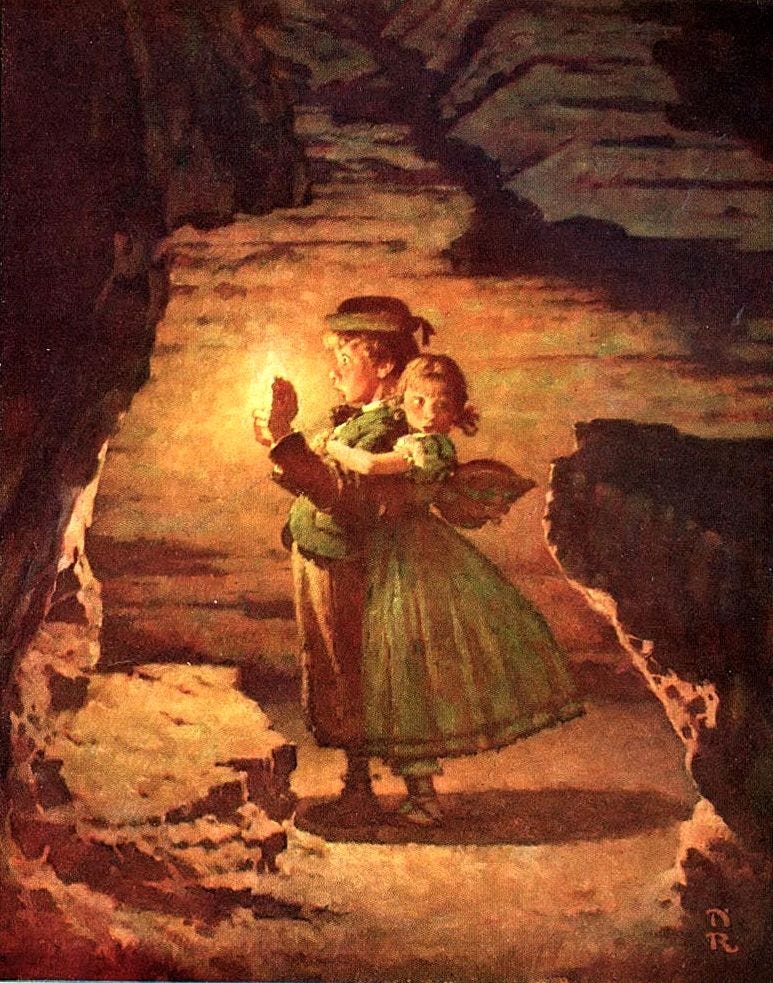Why You Should Read 'The Adventures of Tom Sawyer'
A pleasant reminder of what adults once were, and of how they felt and thought and talked, and what queer enterprises they sometimes engaged in.
Many consider Mark Twain’s 1876 Mississippi River classic to be the preeminent “great American novel” and so it is at the risk of sounding trite that I heartily recommend it to you.
Perhaps it is because so many of us had read The Adventures of Tom Sawyer as children, likely in school (I didn’t), and maybe because the book is about children, that grown-up readers wrongfully disregard this work as being something meant just for kids. While Twain’s classic should be considered wholly-acceptable for young eyes, it is woefully erroneous to treat this book as being something pedestrian. It’s not.
But fret not, modern reader! Twain anticipated this attitude from even his contemporary audience. In the preface of his book, he writes:
“Although this book is intended mainly for the entertainment of boys and girls, I hope it will not be shunned by men and women on that account, for part of my plan has been to try to pleasantly remind adults of what they once were themselves, and of how they felt and thought and talked, and what queer enterprises they sometimes engaged in.”
And it is on that plain — reminding us that we too were once young — that Mark Twain demonstrates a rare genius. And his talent as a renown humorist is given full license to shine in the absurdities of this great book.
Tom Sawyer’s influence on the Robin Hood legend
Now for those of you who remain unconvinced that Tom Sawyer is worth the investment of your time, I would pivot my argument to your sense of adventure. The individual chapters of Tom Sawyer are in fact a brilliantly strung-together collection of chronological micro-adventures which all lend themselves to the telling of one great meta-narrative.
It is on that front that I believe that Mark Twain made an impact upon the long-established legends of that prolific Sherwood outlaw. Like Tom Sawyer, The Merry Adventures of Robin Hood (which was first published eight years after Twain’s classic) is told in mini-adventures with a brisk, jubilant writing style which forces you to smile. Each chapter is an isolated adventure which leads the reader through a meandering series of life events, forming one collected grand scope adventure.
I fondly suspect that Pyle would have gleaned considerable enjoyment from the chapter where Tom and his friend are playing Sherwood outlaws in the woods.
“They said they would rather be outlaws a year in Sherwood Forest than President of the United States forever.”
While I don’t have any other tangible evidence to back this little theory up (call it more of a strong suspicion then), I don’t think its too much of a stretch to propose that the great illustrator and author Howard Pyle took (not just a little) inspiration from Tom Sawyer.
The evolution of the Robin Hood legend was influenced by Tom Sawyer. Prove me wrong.
As American as Apple Pie
With all its humour and wit, The Adventures of Tom Sawyer is like a time-machine to a bygone age. As Mark Twain records in the 1876 preface, “The odd superstitions touched upon in this book were all prevalent among children and slaves in the West at the period of this story—that is to say, thirty or forty' years ago.” That takes the reader back to an eyewitness experience of the Mississippi River, circa 1840.
“Most of the adventures recorded in this book really occurred; one or two were experiences of my own, the rest of those of boys who were schoolmates of mine. Huck Finn is drawn from life; Tom Sawyer also, but not from an individual—he is a combination of the characteristics of three boys whom I knew, and therefore belongs to the composite order of architecture.
Finally, when the great Normal Rockwell was commissioned to illustrate Mark Twain’s classic, The Adventures of Tom Sawyer would be forever cemented as the pinnacle of Americana.






Tom Sawyer as the precursor to Robin Hood in tone and style is fascinating. I’ll have to reread with a critical eye.